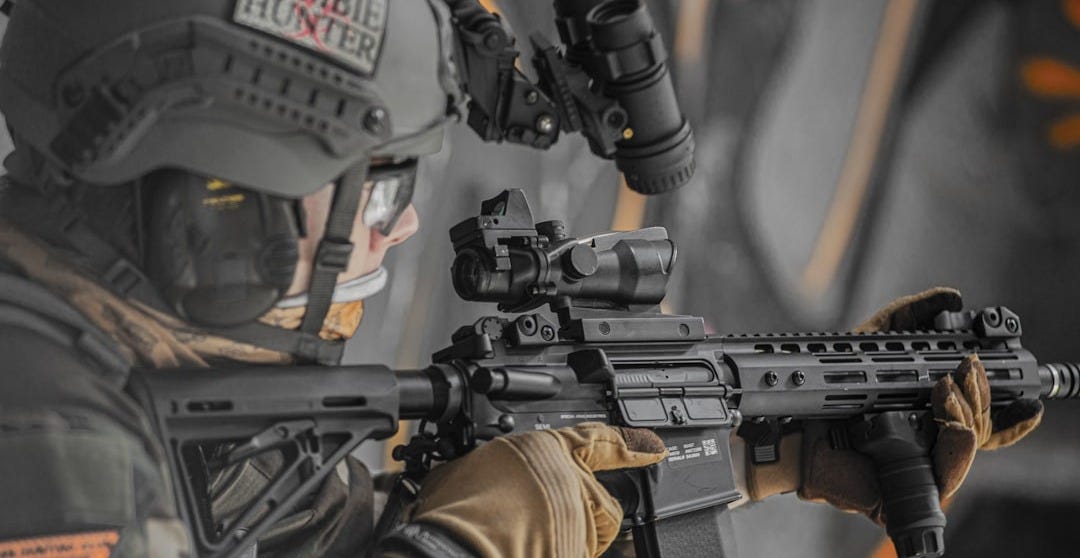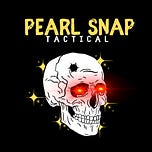
Today, we’re taking a hard look at what makes a tactical unit effective—not just in the chaos of combat, but in the kind of world you and I live in every day. Whether you’re in the military, law enforcement, or just a security-minded citizen trying to protect what you love, the same core principles apply.
History backs this up time and time again: superior tactics are the great equalizer. Whether you're looking at guerrilla fighters outmaneuvering conventional armies, or special operations teams neutralizing enemies with precision and coordination, it's not always about who has the most firepower—it's about who uses what they have more intelligently.
From the Spartans at Thermopylae to the Viet Cong in Vietnam, and even modern urban defenders in conflict zones today, tactical superiority often trumps numbers and equipment. Tactics allow smaller or less equipped groups to exploit weaknesses, control tempo, shape terrain, and dictate terms. For civilians, this lesson is critical: you may not have access to the same tools as law enforcement or the military, but with the right mindset and tactics, you can still take decisive, effective action in a crisis.
So, let’s go!
In this episode, we’re digging into the seven tactical fundamentals as outlined in the U.S. Army’s Field Manual 3-21.8. In particular, we’ll be looking at the principles of Tactical Maneuver, Advantage, Combinations, Tactical Decision-Making, Leadership, Combat Power, and Situation. These aren’t just textbook terms. These are living, breathing principles that govern how warriors fight and survive. We’ll first look at them through a military lens, then pivot to how these ideas apply to you—the citizen, the protector, the one who understands that safety is earned, not promised.
1. Tactical Maneuver
In the military, maneuver isn’t just about movement—it’s about moving with purpose. The goal is to place your forces in a position of advantage over the enemy. Think of a squad bounding under fire: one team lays down suppressive fire while the other moves. It’s coordinated. It’s deliberate. And it’s built around the principle of outmaneuvering your enemy not just physically, but mentally.
Real-world example: During urban operations, units may utilize bounding overwatch techniques in dense urban terrain to clear buildings, street by street. Teams would alternate movement and cover to outmaneuver insurgents hiding in complex structures.
For the security-minded citizen, maneuver might mean how you move through your home during a potential break-in, or how you navigate terrain during an evacuation. It could be choosing to flank around a problem rather than go through it. It’s about never being static—physically or mentally.
Real-world example: During the 2020 riots, some citizens had to maneuver out of urban areas in order to avoid active protest zones, barricades, or blocked highways. Those who had pre-planned alternate routes had the upper hand.
2. Advantage
Advantage is about seizing and maintaining the initiative. It may mean striking first or moving faster, but it always means thinking quicker. It might come from night vision, superior terrain, better intel, or just raw aggression. In military operations, advantage is what keeps your opponent off balance and reacting to you, instead of the other way around.
Real-world example: During operations in Iraq and Afghanistan, early aerial reconnaissance were used at times by U.S. forces to gain a critical advantage by identifying enemy positions before troops entered contested areas, allowing them to plan routes and fire support effectively.
In your world, advantage comes from preparation. Maybe it’s early warning systems like motion detectors or cameras. Maybe it’s training in low-light shooting or knowing your city streets and routes better than anyone else. Whatever the form, it’s about putting yourself in a position where you can respond faster and smarter than the threat.
Real-world example: Homeowners with layered security—cameras, motion lighting, reinforced doors—have successfully deterred or delayed intruders until law enforcement arrived, simply by holding the advantage.
3. Combinations

Combinations are about integrating capabilities. Infantry working with indirect fire. Suppression paired with flanking. Smoke with breaching. It’s about synergy. A single rifleman is effective, but a squad that synchronizes movement, fire, communication, and terrain is a force multiplier. Every tool complements another.
Real-world example: During the invasion of Iraq, combined arms teams used tanks to suppress enemy fire while infantry advanced behind them. Drones provided overwatch, artillery softened resistance, and squads moved in to secure.
You don’t need to be an army of one—you need to integrate your skills and tools. That might mean combining firearms training with medical skills, communication plans with movement routes, or technology with mindset. A good flashlight, a reliable firearm, a trauma kit, and a clear head—that’s a powerful combination.
Real-world example: A Texas couple combined forces to repel a home invader during a rural break-in while coordinating with 911 under pressure.
4. Tactical Decision-Making
Combat rarely goes as planned. Leaders at the squad and platoon level have to make decisions under pressure, with limited information, and no time to hesitate. That’s where tactical decision-making comes in. It involves analyzing the situation using tools like METT-TC—Mission, Enemy, Terrain, Troops, Time, and Civilian considerations—and acting fast. The battlefield favors those who can observe, orient, decide, and act—what we call the OODA loop.
Real-world example: Battle of Wanat (July 13, 2008): Under heavy Taliban assault at Vehicle Patrol Base Kahler, junior leaders made snap decisions—shifting positions, reallocating sectors, and calling in mortar/artillery support—which helped stabilize the situation and save lives.
You may not be analyzing a battlefield, but you are constantly processing your surroundings. What’s your mission? Who’s with you? What are your threats? What time constraints are you under? This is METT-TC applied to everyday readiness. It’s knowing when to act, when to wait, and how to pivot when things fall apart.
Real-world example: During Hurricane Katrina, many citizens had to decide whether to stay or evacuate, factoring in time, available transportation, safety of routes, and group dynamics. Those who had were able to cycle through the decision-making process faster tended to fare better.
5. Leadership
Leadership isn’t about rank. It’s about presence. In the thick of a firefight, the squad leader who stays calm, issues clear commands, and leads by example can change the course of an engagement. Leadership on the ground is visceral. It’s physical. It’s emotional. And it’s absolutely essential.
Real-world example: In Mogadishu during the infamous Black Hawk Down incident, NCOs on the ground took charge amidst chaos, reorganizing isolated elements and leading breakouts under fire when traditional command structures collapsed.
In a crisis, someone needs to take the lead. Whether it’s protecting your family during a natural disaster or leading a small group in a chaotic scenario, your calm presence and clear direction can be the difference between order and panic. Leadership starts with owning responsibility and projecting confidence.
Real-world example: During the 2017 Las Vegas shooting, civilians guided others to safety, provided first aid, and coordinated with police under fire. Many had no formal training but stepped up when it mattered.
6. Combat Power

Combat power is more than just guns and bodies. It includes morale, positioning, logistics, firepower, and the will to fight. A well-led team with high morale and good cover can defeat a numerically superior force. Combat power is about understanding what you have and how to bring it all to bear at the decisive moment.
Real-world example: The outnumbered defenders at COP Keating in Afghanistan held off Taliban attackers for over 12 hours with coordinated fires, mutual support, and sheer grit despite overwhelming odds.
Your combat power is your total capability: physical fitness, weapons proficiency, comms, mindset, and support network. Don’t just count rounds in a magazine—count your hours of training, your trusted allies, your knowledge of the terrain. That’s your real power.
Real-world example: In rural communities affected by wildfires, coordinated local defense groups used ATVs, radios, and chainsaws to protect homes and cut firebreaks, combining skills and morale into real combat power.
We’ve discussed the importance of mutual support networks and how to build them in previous episodes. Make sure you’ve listen to those to get spun up on the topic and get to work. Now.
7. Situation
Everything depends on the situation. The terrain. The enemy’s disposition. Your available resources. The time of day. Weather. Civilian presence. Understanding the situation—and adapting to it—is what separates success from failure. Plans are important, but adaptability is life-saving.
Real-world example: In Iraq, troops often shifted from combat patrol to civil affairs in minutes depending on the village they entered. One block could be friendly; the next hostile. Success meant reading and adapting to each new situation.
Always read the situation. Whether you’re in a crowd, driving through a sketchy part of town, or noticing odd behavior around your home, awareness is your early warning system. The more accurately you understand the situation, the more effectively you can shape it in your favor.
Real-world example: In Marietta, Georgia, a man named Gary Edwards intervened in two back-to-back attempted carjackings, displaying sharp situational awareness and decisive action. He first noticed a suspect, attempting to carjack a woman. Moments later, Riley allegedly targeted a couple with a child. Edwards, recognizing the escalating threat, confronted Riley with a firearm and held him at gunpoint until police arrived, preventing any harm to the victims.
After this initial encounter, Riley reportedly tried to carjack another vehicle, but Edwards stepped in once more to stop the second attempt. While local law enforcement commended Edwards for his bravery, they also reminded the public of the dangers involved in intervening in violent crimes. Authorities typically advise citizens to focus on observing details, calling 911, and avoiding direct confrontation.
Wrapping it up…

These seven fundamentals are more than just doctrine—they’re a mindset. Whether you’re leading troops in combat or leading your family through uncertain times, the principles stay the same. Move with purpose. Seek advantage. Combine your strengths. Make decisions quickly. Lead with courage. Use all your power effectively. And above all, understand your situation.
Because in the end, being prepared isn’t about paranoia. It’s about responsibility. It’s about having a tactical mind, not just a tactical loadout. Train hard. Stay sharp. And remember: safety isn’t given. It’s earned.
Until next time—stay ready, stay aware, and stay in the fight.
Resources:
Are you diggin this transmission? Share it with a buddy and keep the conversation going.













Share this post